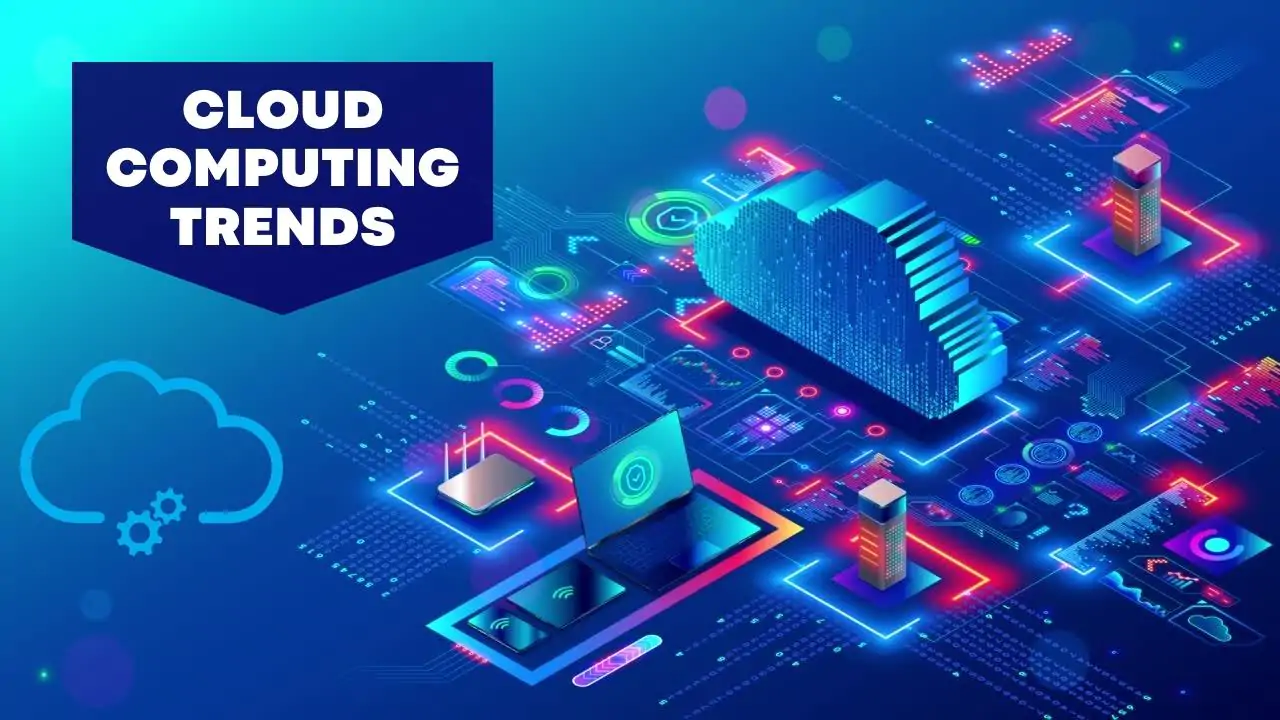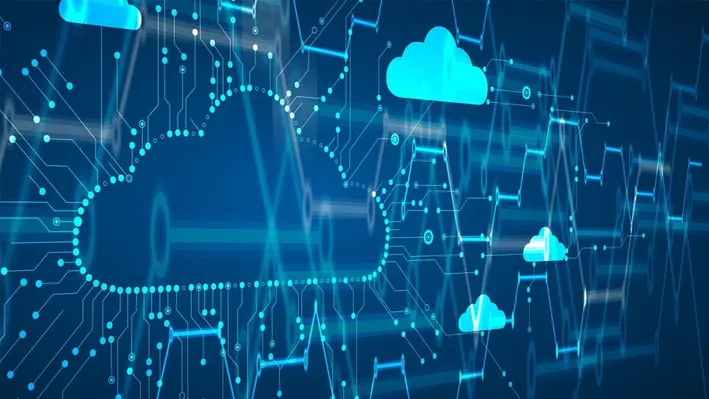
Cloud computing and data storage technologies have transformed how businesses and individuals manage, store, and process data. These innovations have provided scalable, flexible, and cost-effective application solutions. As we advance into the digital age, the landscape of cloud computing and data storage continues evolving rapidly. This blog explores the future trends in these fields, highlighting critical developments expected to shape the industry in the coming years.
The Evolution of Cloud Computing
1) A Brief History
Cloud computing has significantly evolved since its inception. Initially, it emerged as a means to provide storage and computing resources over the Internet, allowing businesses to avoid the expenses and complexities associated with owning and maintaining physical servers. Over time, cloud services have diversified into Infrastructure as a Service (IaaS), Platform as a Service (PaaS), and Software as a Service (SaaS), each offering different levels of control and abstraction.
2) Current State of Cloud Computing
Today, cloud computing is a mature technology widely adopted across various industries. It offers numerous benefits, including on-demand resource availability, elasticity, and the capability to support innovative technologies such as artificial intelligence (AI) and machine learning (ML). Major cloud service providers like Amazon Web Services (AWS), Microsoft Azure, and Google Cloud Platform (GCP) dominate the market, providing comprehensive services catering to diverse business needs.
Future Trends in Cloud Computing
1. Edge Computing
Edge computing is poised to become a significant trend in the cloud computing landscape. It involves processing data closer to the source of data generation (i.e., at the “edge” of the network) rather than relying solely on centralized cloud data centers. This approach reduces latency, improves response times, and minimizes bandwidth usage.
1) Benefits of Edge Computing
- Reduced Latency: By processing data near the source, edge computing significantly reduces the time it takes for data to travel, enhancing real-time data processing capabilities.
- Bandwidth Optimization: Edge computing decreases the amount of data that needs to be transmitted to central cloud servers, conserving bandwidth.
- Enhanced Security and Privacy: Data processed locally at the edge can be more secure, as it reduces the amount of data exposed to potential vulnerabilities during transmission.
2) Applications of Edge Computing
- IoT Devices: Edge computing is essential for the effective functioning of IoT devices, which generate large volumes of data that need real-time processing.
- Autonomous Vehicles: Self-driving cars require rapid data processing to make split-second decisions, making edge computing a crucial technology.
- Intelligent Cities: Edge computing can power innovative city applications by locally processing data from sensors and devices, facilitating efficient urban management.
2. Multi-Cloud and Hybrid Cloud Strategies
Organizations are increasingly adopting multi-cloud and hybrid cloud strategies to leverage the strengths of different cloud providers and on-premises Infrastructure. These strategies provide greater flexibility, redundancy, and optimization opportunities.
1) Multi-Cloud Strategy
A multi-cloud strategy involves using services from multiple cloud providers. This approach helps businesses avoid vendor lock-in, improve resilience, and optimize costs by selecting the best services from different providers.
2) Hybrid Cloud Strategy
A hybrid cloud strategy combines public cloud services with private cloud or on-premises Infrastructure. This approach allows businesses to maintain sensitive data and applications in a private environment while leveraging the scalability and cost-efficiency of public clouds for other workloads.
3. Serverless Computing
Serverless computing, also known as Function as a Service (FaaS), is gaining traction as a critical trend in cloud computing. This model allows developers to run code without managing the underlying Infrastructure. Cloud providers automatically allocate resources and handle scaling based on demand.
1) Benefits of Serverless Computing
- Cost Efficiency: Users pay only for the actual execution time of their code rather than for pre-allocated resources.
- Scalability: Serverless architectures automatically scale with the volume of requests, eliminating the need for manual scaling.
- Simplified Management: Developers can focus on writing code without worrying about server maintenance and management.
2) Applications of Serverless Computing
- Microservices: Serverless computing is ideal for building microservices architectures, where applications are composed of small, independent services.
- Event-Driven Applications: Serverless models are well-suited for applications that respond to events, such as file uploads, database updates, and user interactions.
4. Artificial Intelligence and Machine Learning Integration
Integrating AI and ML with cloud computing is transforming how businesses leverage data. Cloud platforms provide potent tools and services that enable organizations to build, train, and deploy AI and ML models at scale.
1) AI and ML Services in the Cloud
- Data Analytics: Cloud-based AI and ML services offer advanced data analytics capabilities, allowing businesses to derive insights from large datasets.
- Automation: AI-driven automation can optimize various business processes, from customer service to supply chain management.
- Personalization: ML algorithms can analyze user behavior and preferences to deliver real-time personalized experiences.
5. Quantum Computing
While still in its early stages, quantum computing holds immense potential for the future of cloud computing. Quantum computers leverage the principles of quantum mechanics to perform computations currently infeasible with classical computers.
1) Potential Impact of Quantum Computing
- Complex Problem Solving: Quantum computing can solve complex problems in cryptography, materials science, and drug discovery.
- Optimization: Quantum algorithms can optimize complex systems more efficiently than classical algorithms.
- Integration with Cloud Services: As quantum computing matures, cloud providers are expected to offer quantum computing as a service, making this powerful technology accessible to a broader audience.
6. Enhanced Security and Compliance
As cloud adoption continues to grow, so do concerns about security and compliance. Future trends in cloud security will focus on enhancing protection mechanisms and ensuring compliance with evolving regulations.
1) Security Enhancements
- Zero Trust Security: A zero-trust model, where every access request is verified regardless of its origin, will become more prevalent.
- Advanced Threat Detection: AI and ML will play a significant role in detecting and mitigating threats in real time.
- Encryption: Advanced encryption techniques, such as homomorphic encryption, will ensure data remains secure during processing and storage.
2) Compliance
- Regulatory Compliance: Cloud providers will offer more comprehensive tools to help businesses comply with GDPR, HIPAA, and CCPA regulations.
- Data Sovereignty: Providers will expand their data center locations to meet data residency requirements in different regions.
Future Trends in Data Storage
1) Software-Defined Storage (SDS)
Software-defined storage (SDS) decouples storage hardware from the software that manages it, providing greater flexibility and scalability. SDS solutions are becoming more sophisticated, enabling businesses to manage storage resources more efficiently.
Benefits of SDS
- Cost Savings: Using commodity hardware, SDS can reduce storage costs compared to traditional storage solutions.
- Scalability: SDS allows easy scaling by adding more storage nodes without disrupting operations.
- Flexibility: SDS solutions support a wide range of storage protocols and types, making them adaptable to various workloads.
2) Storage Class Memory (SCM)
Storage Class Memory (SCM) bridges the gap between traditional storage and memory, offering higher performance and lower latency. SCM technologies, such as Intel Optane, provide persistent storage faster than NAND flash but more affordable than DRAM.
Applications of SCM
- Database Acceleration: SCM can significantly speed up database transactions and queries.
- In-Memory Computing: SCM enables larger datasets to be stored in memory, improving the performance of in-memory computing applications.
- Virtualization: SCM can enhance the performance of virtualized environments by reducing storage latency.
3) Object Storage
Object storage is becoming increasingly popular for managing large volumes of unstructured data. It stores data as objects, each containing the data itself, metadata, and a unique identifier, making it highly scalable and suitable for cloud environments.
Benefits of Object Storage
- Scalability: Object storage can scale to accommodate massive amounts of data.
- Durability: Built-in data replication and distribution ensure high durability and availability.
- Cost Efficiency: Object storage is cost-effective for storing large volumes of infrequently accessed data.
4) Data Management and Analytics
Future trends in data storage will focus on integrating data management and analytics capabilities directly into storage solutions. This integration will enable real-time data processing and analysis, providing valuable insights faster.
Key Developments
- Data Lakes: Cloud-based data lakes will offer scalable storage and analytics capabilities for big data applications.
- Integrated Analytics: Storage solutions will include built-in analytics tools, enabling real-time data processing and insights.
- Metadata Management: Enhanced metadata management will improve data discoverability and governance.
5) Data Protection and Recovery
As data becomes increasingly critical to business operations, ensuring its protection and availability will be paramount. Future data protection and recovery trends will focus on minimizing downtime and data loss.
Innovations in Data Protection
- Continuous Data Protection (CDP): CDP solutions will provide near-instantaneous data recovery by continuously capturing changes to data.
- Immutable Storage: It ensures that data cannot be altered or deleted, protecting it from ransomware and other threats.
- Disaster Recovery as a Service (DRaaS): DRaaS solutions will offer comprehensive disaster recovery capabilities, enabling businesses to quickly restore operations after a failure.
6) Energy-Efficient Storage
As data storage demands grow, so does the need for energy-efficient storage solutions. Future trends will focus on reducing the environmental impact of data centers.
Sustainable Practices
- Energy-Efficient Hardware: Developing more energy-efficient storage hardware will help reduce power consumption.
- Renewable Energy: Data centers will increasingly use renewable energy sources to power storage infrastructure.
- Cooling Solutions: Innovative cooling solutions, such as liquid and immersion, will enhance energy efficiency in data centers.
The future of cloud computing and data storage is marked by rapid advancements and emerging trends that promise to reshape the industry. Edge computing, multi-cloud and hybrid strategies, serverless computing, AI and ML integration, quantum computing, enhanced security, and compliance are some of the key trends driving the evolution of cloud computing. On the data storage front, software-defined storage, storage class memory, object storage, integrated data management and analytics, advanced data protection, and energy-efficient solutions are set to revolutionize how we store and manage data.
As businesses navigate the complexities of the digital age, staying ahead of these trends will be crucial for leveraging the full potential of cloud computing and data storage technologies. Embracing these innovations will enhance operational efficiency and provide a competitive edge in an increasingly data-driven world. The future holds immense possibilities, and the journey of cloud computing and data storage is just beginning.



